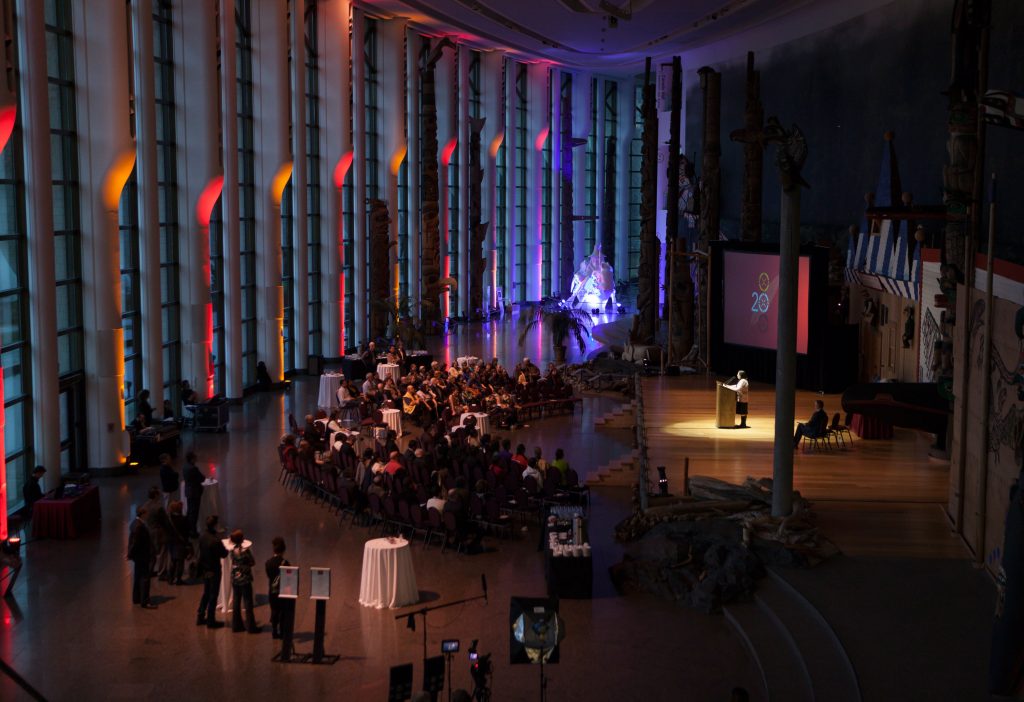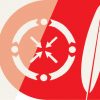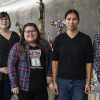The goal of the Program is to develop ways for Indigenous nations across Canada to represent their own history and culture in concert with cultural institutions.
The Indigenous Internship Program (IIP) offers professional and technical training for First Nations, Métis and Inuit participants. It is the first and most comprehensive program of its kind in Canada. The goal of the Program is to develop ways for Indigenous nations across Canada to represent their own history and culture in concert with cultural institutions.
Since 1993, the Program has welcomed interns from over 40 different Indigenous nations across Canada. Graduates have gone on to become role models and advocates in museum and cultural sectors.
The Program also works with a variety of affiliates and stakeholders such as Indigenous agencies, national museums, the federal government, local colleges and universities, provincial museums, Library and Archives Canada, the Canadian Conservation Institute, and the First Nations Confederacy of Cultural Education Centres, as well as Indigenous museums, libraries, cultural centres, and cultural tourism ventures.
Call for Proposals
Applications: Ongoing
The Canadian Museum of History’s Indigenous Internship Program will be accepting applications on an ongoing basis.
All applications should be received at least three months prior to the desired start date.
Timing
In order to ensure that the Program is as accessible as possible, we are pleased to offer a number of participation options, including in-person and hybrid, as well as part-time internships. Interested applicants will work with an Internship Coordinator to select the option that best suits them.
Eight-Month In-Person Option
From September to April
The first option is an eight-month, in-person and on-site internship. This internship takes place every year from September to April, with a two-week break for the holiday season. During the training year, candidates can undertake practicum assignments lasting four to five weeks in the areas of research, collections, conservation, exhibitions, public programs, corporate affairs, development, and museum services.
Please note that this option does require participants to be located in the Ottawa-Gatineau region throughout the duration of the internship.
Four-Month Hybrid Option
From January to April or from September to December
The internship will take place during a four-month period, either from January to April or from September to December. During those four months, participants will be working remotely from their preferred location on a research project based on a project proposal. They will be given access to the Museum’s network and database, and will have weekly meetings with an Internship Coordinator and a Mentor from the Museum to monitor their progress and to foster creativity.
On three separate visits of one week duration, participants will be brought to the Museum (all expenses paid). During the on-site portions of the internships, participants will have access to Museum resources in support of their specific project goals, and will be mentored in core Museum functions including research, collections, conservation, exhibitions, public programs, corporate affairs, development, and museum services.

Guest alumna Margaret Fireman (Cree) addresses the attendees at the 20th anniversary graduation ceremony in 2013
Quotes and Testimonials
Where have our interns come from?
Irvine Scalplock
Siksika Nation Alberta, started the Program in 1993–1994.
How did you hear about this program?
In 1993, I was approached by an Elder by the name of Russell Wright (late) of Siksika. He asked me if I would consider leaving the community to attend a training program in museum practices. He told me I would have to move across the country for a period of six months. Before he left, I told him I would need some time to consider it. After some weeks passed, a member of the Siksika Council came to my house and asked me the very same questions that the Elder had asked me. As it turns out, I was chosen from a group of six people from the community. Needless to say, off I went to Quebec to begin six months of the most enjoyable work I have ever been involved in.
What were your expectations coming into the program?
I was thrilled to be training at the Canadian Museum of Civilization (now Canadian Museum of History). I was familiar with the set-up at the Glenbow Museum and since that time I had always wanted to work in a museum environment. I always wanted to work in a setting where I could appreciate artifacts and stuff from the past. At the Museum, all my expectations were met and I would do the work all over again in a minute.
How did the training experience influence your career?
The training has allowed me to fully appreciate the type of work that goes into preserving and presenting works of art in various forms. Even after I retired, I carried on with the techniques I learned into my private business. In my private business I make reproductions of artifacts and treat them the way they would be treated in a museum setting. I create mounts and supports the way I learned it at the Museum.
What inspiring message would you give to someone considering taking the program?
If you have decided that a museum career is on your horizon, then the Canadian Museum of History is where you want to be. At the Museum, there are many worlds and experiences to discover. The exhibits and displays are awesome, you can be right there when a room is transformed into something from the past. There are many things that the Museum has to offer. For First Nation students, don’t pass this one, you won’t regret it.
Capturing Gun – Irvine Scalplock graduated from the Program in 1994.
Linda Grussani
Kitigan Zibi Anishinabeg First Nation, from Ottawa, Ontario, started the Program in 2000.
How did you hear about this program?
I was referred to the program by my Post-Secondary Education Support Administrator at the Kitigan Zibi Education Council, who told me to consider applying after I completed my undergraduate degree in Art History at Carleton University.
What were your expectations coming into the program?
To learn from Museum staff about the collecting, care and presentation of our cultural heritage; to become familiar with the day-to-day operations of the Museum; and to learn what Algonquin artworks the Museum had in its collections.
How would you describe your experience at the museum?
Overall, my experience was very positive. The other interns in my year were amazing people to work with and the Museum staff was always very generous in sharing their knowledge. From my experience, I have gained lifelong friends, along with important skills and training.
How did the training experience influence your career?
My experiences in the program directly led to finding employment in the field.
What inspiring message would you give to someone considering taking the program?
It is a fantastic program to learn more about collecting, care and presentation of Aboriginal material and visual culture. The Museum has amazing collections and a vast array of experience to draw on.
Linda Grussani graduated from the Program in 2001.
Margaret Fireman
Cree Nation of Chisasibi, started the Program in 2000.
What were your expectations coming into the Program?
I wanted to further my knowledge in this field and actually work in a museum-environment setting. While there, I did research on our former community of Fort George and also got to work on some artifacts and materials collections that we had recently acquired that year for our community. I worked in the library and archives, conservation, ethnology, collections management, children’s museum, and the exhibition hall. Our group of interns were also consulted on the First Peoples’ Hall exhibits, which I found was quite new but exciting to be able to contribute our ideas from a First Peoples’ perspective. I learned so much about hands-on conservation techniques, and the people that I worked with in all the departments were always willing to help and give advice. It was a good working environment.
What inspiring message would you give to someone considering taking the program?
I encourage anyone who wants to follow the Indigenous Internship Program at the Canadian Museum of History. We established good working relationships and over the years, I still maintain contact with the people that I worked with there, and I bring our groups of Elders and youth workers to see the collections at the Canadian Museum of History and other museums such as the National Museum of the American Indian in Washington, DC.
Margaret Fireman graduated from the Program in 2001.

